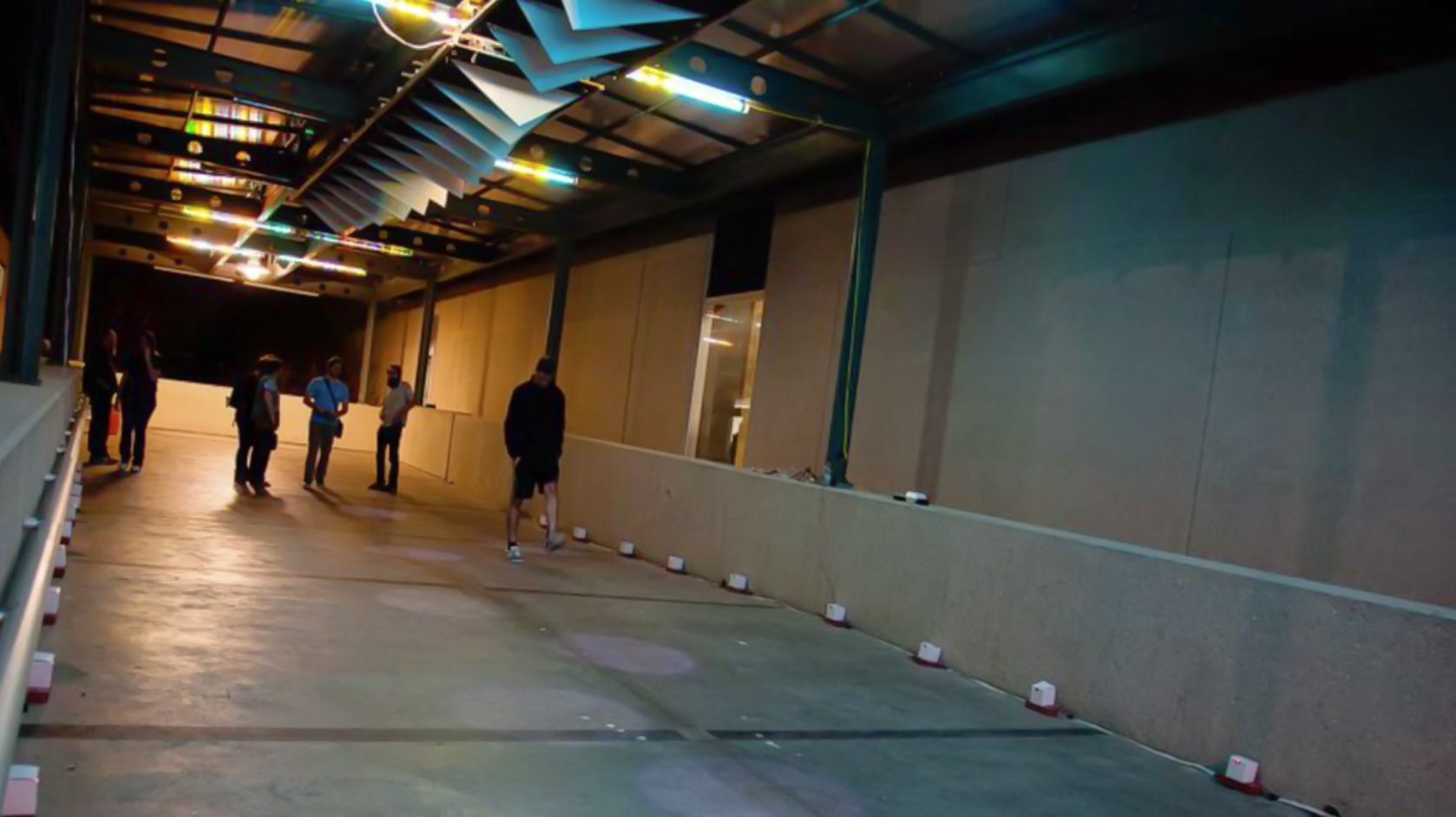PathWave
Summary
Seen from afar, an architectural installation guides passers by to a unique system of sensors and motors hovering above a quaint bridge between buildings. Stepping on the bridge incites pedestrians to further their journey to the other end. Pathwave employs DIY laser tripwires, architectural aids, motorized flashlights, and a unique visual phenomenon known as Newton's Cradle to direct and gamify pedestrian traffic across a bridge.
My responsibilities
I worked on the creative direction, physical computing, production and documentation of the piece. Specifically, I built and programmed the DIY laser trip wires, programmed a part of the robotic flashlight light cycle, and had a heavy hand in building the wooden installation. I also filmed and edited the documentation video.
Skills
Architectural Installation, Interaction Design, UX Design, Physical Computing, Programming, Carpentry.
Tools
Arduino, openFrameworks, Wood Shop, Blender, Lasers, Flashlights.
Project Details
Problem
PathWave grew out of a desire to awe and inspire pedestrians on their daily commute through a cityscape. There were two objectives that this piece needed to achieve: attract pedestrians from afar, and incite them to walk across a bridge. Using perspective, rhythm, pattern, light, and play we were able to create a pop-up experience for pedestrians to play, wonder, and smile.
Solution
To solve the first problem, attracting pedestrians from afar, we built a large and curious architectural installation. Fifty feed across and ten feet above the bridge hung an array of differently shaped wooden triangles whose tips, when seen from a distance, formed a sine curve. The next challenge was prompting pedestrians to walk across the bridge. Embedded between each hanging wooden triangle were flashlights on servo motors. On the ground level of the bridge, directly underneath the hanging sculpture, stood a series of DIY laser tripwires. Pedestrians who crossed the bridge would trigger these tripwires. Each laser tripwire was connected to one of the motorized flashlights that hung from the installation. As each laser tripwire was triggered, the flashlights would then also be signaled to rotate. Walking the duration of the bridge would leave behind an array of swinging spotlights on the floor that painted the beautiful phenomenon known as Newton's Cradle.
Collaborators
Supervisors: Jinsil Hwaryoung Seo.
Collaborators: John Moody and Parker Anigian.





